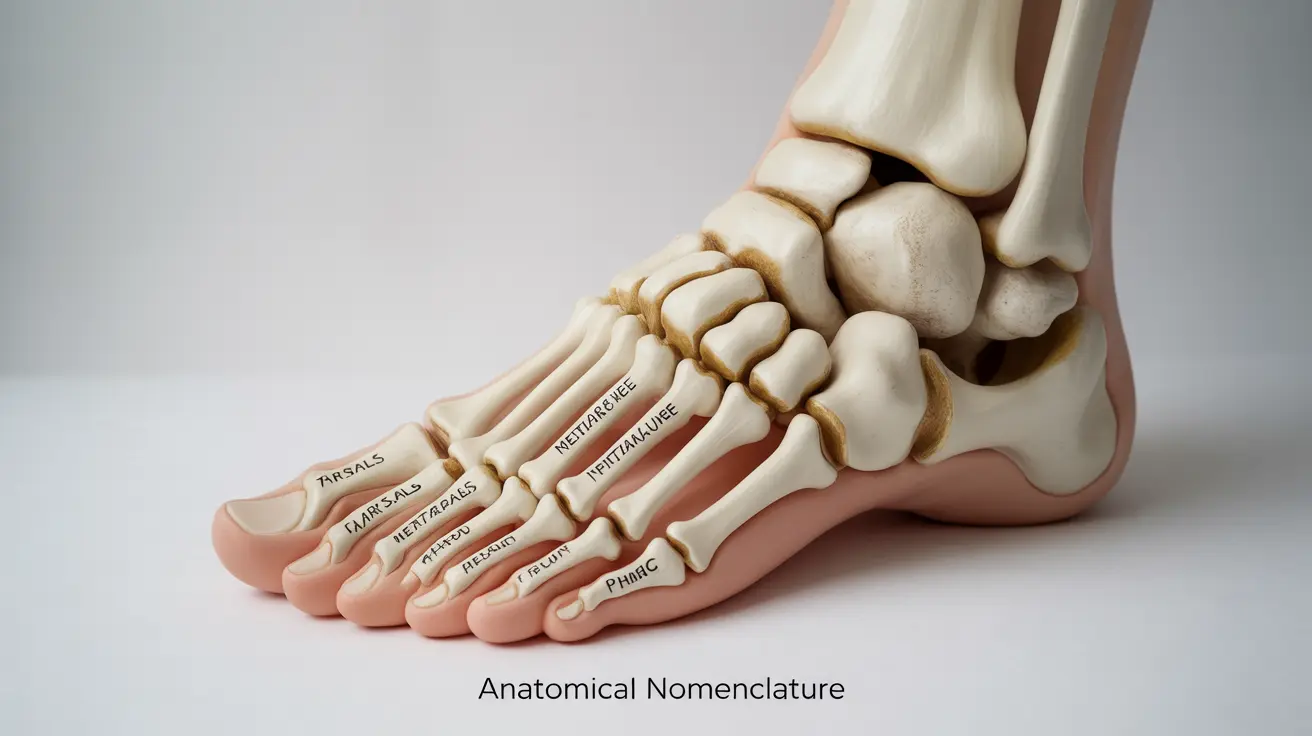The human foot is a remarkable feat of natural engineering, containing 26 bones that work together to support our weight, facilitate movement, and maintain balance. Understanding the structure and function of these bones is crucial for anyone interested in foot health, whether you're an athlete, healthcare professional, or someone experiencing foot problems.
In this comprehensive guide, we'll explore the different types of bones in the foot, their specific functions, and how they contribute to our daily activities. We'll also discuss common conditions that can affect these essential structures.
The Three Main Sections of Foot Bones
The bones in the foot are organized into three distinct sections, each playing a vital role in foot mechanics and mobility:
Tarsal Bones
The tarsal bones form the rear and middle portion of the foot, consisting of seven bones that include:
- Calcaneus (heel bone)
- Talus (ankle bone)
- Navicular
- Cuboid
- Three cuneiform bones
These bones create the foot's arch and are crucial for shock absorption and weight distribution during walking and standing.
Metatarsal Bones
The five metatarsal bones form the middle section of the foot, connecting the tarsal bones to the toes. Each metatarsal has specific characteristics:
- First metatarsal: The thickest and shortest
- Second through fourth metatarsals: Gradually decreasing in length
- Fifth metatarsal: Contains a prominent bump on its outer edge
Phalanges
The phalanges comprise 14 bones that form the toes:
- Big toe: Two phalanges (proximal and distal)
- Other toes: Three phalanges each (proximal, middle, and distal)
Special Bones and Their Functions
The Talus and Calcaneus
These two bones deserve special attention due to their crucial roles. The talus connects the leg to the foot and distributes body weight, while the calcaneus forms the heel and serves as an attachment point for important tendons and ligaments.
Sesamoid Bones
Located beneath the first metatarsal, these small, round bones act like pulleys for tendons and help distribute weight under the big toe. They're essential for proper toe movement and protecting tendons from excessive wear.
Common Foot Bone Conditions
Several conditions can affect the bones in your foot:
- Stress fractures
- Bunions
- Bone spurs
- Arthritis
- Plantar fasciitis
Maintaining Healthy Foot Bones
To protect and maintain the health of your foot bones:
- Wear properly fitting shoes
- Maintain a healthy weight
- Exercise regularly
- Get adequate calcium and vitamin D
- Address foot pain promptly
Frequently Asked Questions
- What are the names and functions of the 26 bones in the human foot?
The 26 bones include seven tarsal bones (calcaneus, talus, navicular, cuboid, and three cuneiforms), five metatarsal bones, and 14 phalanges. These bones work together to support body weight, enable movement, and maintain balance.
- How do the tarsal, metatarsal, and phalange bones contribute to foot movement and balance?
Tarsal bones provide stability and shock absorption, metatarsals form the foot's framework and help distribute weight, and phalanges enable proper toe movement for walking and maintaining balance.
- What roles do the talus and calcaneus bones play in supporting body weight and walking?
The talus acts as a connector between the leg and foot, distributing body weight evenly. The calcaneus forms the heel, absorbs shock during walking, and provides attachment points for crucial tendons and ligaments.
- How do sesamoid bones under the big toe help reduce pressure and protect tendons?
Sesamoid bones act as pulleys for tendons, help distribute weight under the first metatarsal, and protect tendons from excessive wear and tear during movement.
- What common injuries or conditions affect the bones in the foot, and how can they impact mobility?
Common conditions include stress fractures, bunions, bone spurs, arthritis, and plantar fasciitis. These conditions can cause pain, limit movement, affect gait, and reduce overall mobility if left untreated.




